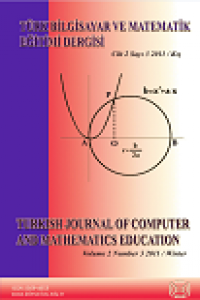Cebirin Tarihsel Gelişimi
Abstract
Cebirsel problemlerin çözümleri ve cebirsel gösterimler tarih boyunca hep aynı mı olmuştur? Elbette matematiğin bir alt dalı olan cebir de edebiyat, fizik, sanat, ekonomi ve müzik gibi sürekli gelişen bir insan etkinliğidir. Cebirin bugünü olduğu gibi, geçmişi vardır ve geleceği de olacaktır. Bugün öğrendiğimiz ve kullandığımız cebir 1000 yıl, 500 yıl hatta 100 yıl önceki cebirden çok farklıdır. Cebirin geçmişini bilmek, bugünü ve geleceği ile ilgili etkileşime geçmemizi ve cebiri daha iyi anlamamızı kolaylaştırabilir. Bu çalışma ile cebirin gelişim sürecinin ayrıntılı bir görüntüsü ortaya koyulmaya çalışılmıştır. Bu derleme çalışmasında cebirin tarihsel gelişimi, cebirsel ifadelerin, cebirsel problemlerin ve çözümlerinin düz yazı biçiminde yazıldığı dönem, cebirsel ifadelerin gösterimlerinde kısaltmaların kullanıldığı dönem ve sembollerin kullanıldığı dönem olarak üç dönemde ele alınmaktadır. Çalışmada; farklı kültürlerin kullandıkları cebirsel gösterimleri ve cebirsel problemleri nasıl çözdükleri bu dönemler dikkate alınarak ortaya koyulmaya çalışılmıştır.
Keywords
Historical Development of Algebra
Abstract
Mathematics and as well as algebra is a human activity which has been developing constantly as literature, physics, art, economy and music. Cebir that we learn in schools today is different from the past and will also be different in the next century. Many students and teachers are not aware of that there is an old and rich history of the mathematics. Because of this fact, they fail to consider that mathematics shows a consistently change, it is products of human labour and mathematics which performed in different times and places, are different from each other (Tzanakis & Arcavi, 2000). They see the mathematical knowledge as an impeccable and certain knowledge body, consisted of true and regular theorems, proofs and formulas (Arcavi, 1991; Bidwell, 1993). This perception of mathematics has negative effects over learning style and mathematics success of students (Franke & Carey, 1997; Carlson, 1999; Cifarelli & Goodson, 2001). As a way to remedy this deficiency which exists in many students and teachers, researchers suggested the idea of necessity for understanding the historical development of mathematics and integration of historical activities into mathematics lessons (Fauvel, 1991; Ernest, 1998; Tzanakis & Arcavi, 2002). In the light of these suggestions, this study have prepared to expose detailed image of historical development process of algebra, to help for understanding of teachers and students about nature and historical development process of mathematics, and to provide a source for teachers to use in their classes.
Details
| Primary Language | Turkish |
|---|---|
| Journal Section | Research Articles |
| Authors | |
| Publication Date | November 6, 2013 |
| Published in Issue | Year 2011 Volume: 2 Issue: 3 |

